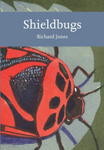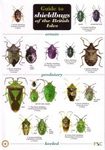By: Andrej Čokl(Editor), Miguel Borges(Editor)
256 pages, 11 colour photos and illustrations, 11 b/w illustrations, tables
![Stink Bugs Stink Bugs]()
Click to have a closer look
About this book
Contents
Customer reviews
Related titles
About this book
Stinkbug Classification, Phylogeny, Biology and Reproductive Behavior presents an overview of the Pentatomidae species, covering their biology, phylogeny and reproductive behavior, main plants used in their diet and their nutritional exigencies, predatory stinkbugs, interactions between herbivores-plants and natural enemies, use of pheromone for monitoring phytophagous populations, and chemical and vibrational communication signals. It also presents possible technologies to be applied in field crops for pest management that could be developed as the basis of the interplay of stink bug communication signals.
Contents
Stinkbug Classification, Phylogeny, Biology and Reproductive Behavior
Jocelia Grazia and Cristiano F. Schwertner
Host Plant-Stinkbug (Pentatomidae) Relationships
Antônio R. Panizzi and Tiago Lucini
Predatory Stink Bugs (Asopinae) and the Role of Substrate-Borne Vibrational Signals in Intra- and Interspecific Interactions
Alenka Žunic Kosi and Andrej Čokl
Communication as the Basis for Biorational Control
Andrej Čokl, Maria Carolina Blassioli-Moraes, Raul Alberto Laumann and Miguel Borges
The Semiochemistry of Pentatomidae
Miguel Borges and Maria Carolina Blassioli-Moraes
Substrate-Borne Vibratory Communication
Andrej Čokl, Raul Alberto Laumann and Nataša Stritih
Stink Bug Communication Network and Environment
Andrej Čokl, Alenka Žunic Kosi and Meta-Virant-Doberlet
Plant and Stink Bug Interactions at Different Trophic Levels
Salvatore Guarino, Ezio Peri, Stefano Colazza
Use of Pheromones for Predatory Stink Bugs Management
Diego Martins Magalhães
Use of Pheromones for Monitoring Phytophagous Stink Bugs (Hemiptera: Pentatomidae)
P. Glynn Tillman and Ted E. Cottrell
Use of Vibratory Signals for Stink Bug Monitoring and Control
Raul Alberto Laumann, Douglas Henrique Bottura Maccagnan and Andrej Čokl
Suggestions for Neotropic Stink Bug Pest Status and Control
Miguel Borges, Maria Carolina Blassioli-Moraes, Raul Alberto Laumann and Andrej Čokl
Customer Reviews
By: Andrej Čokl(Editor), Miguel Borges(Editor)
256 pages, 11 colour photos and illustrations, 11 b/w illustrations, tables















![Faune de France, Volume 77: Hémiptères Saldidae et Leptopodidae d'Europe Occidentale et du Maghreb [Hemiptera Saldidae and Leptopodidae from Western Europe and the Maghreb]](http://mediacdn.nhbs.com/jackets/jackets_resizer_medium/34/34077.jpg?height=150&width=98)



















